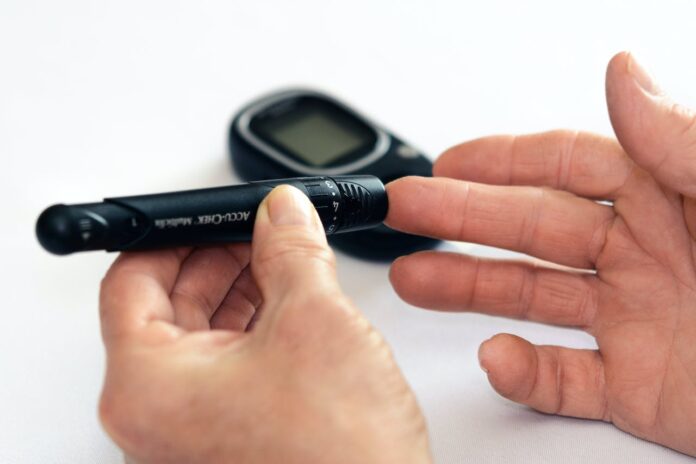In an era where sedentary lifestyles and processed foods dominate our daily routines, the prevalence of diabetes has reached alarming levels. Diabetes, a chronic metabolic disorder characterized by elevated blood sugar levels, requires careful management to prevent complications. In this comprehensive guide, we will delve into the causes, symptoms, and treatments for diabetes, along with practical tips on how to manage and prevent this widespread condition.
Page Contents
Understanding Diabetes
Diabetes is a complex condition that occurs when the body either cannot produce enough insulin or cannot effectively use the insulin it produces. Insulin is a hormone that regulates blood sugar (glucose) and allows it to enter cells, where it is used for energy. There are two main types of diabetes: Type 1 and Type 2.
Read Also : Understanding Premature Hair fall
Causes of Diabetes
Type 1 Diabetes
Type 1 diabetes is an autoimmune disorder where the immune system mistakenly attacks and destroys insulin-producing cells in the pancreas. The exact cause remains unclear, but genetics and environmental factors may contribute. It often develops early in life, and individuals with Type 1 diabetes require lifelong insulin therapy.
Type 2 Diabetes
Type 2 diabetes is more common and typically develops later in life. It occurs when the body becomes resistant to insulin or doesn’t produce enough insulin to maintain normal blood sugar levels. Risk factors for Type 2 diabetes include genetics, obesity, physical inactivity, and poor diet.
Symptoms of Diabetes
Recognizing the symptoms of diabetes is crucial for early diagnosis and effective management. Common symptoms include:
a. Frequent Urination: Excessive thirst and an increased need to urinate may indicate elevated blood sugar levels.
b. Unexplained Weight Loss: Despite a normal or increased appetite, unexplained weight loss can be a symptom of diabetes.
c. Fatigue: Feeling constantly tired and lacking energy may result from the body’s inability to use glucose effectively.
d. Increased Hunger: The body’s cells may not be receiving enough glucose for energy, leading to increased hunger.
e. Blurred Vision: High blood sugar levels can affect the eyes, causing blurred vision.
f. Slow Healing of Wounds: Diabetes can impair the body’s ability to heal, leading to slow wound recovery.
Diagnosing Diabetes
Diabetes is diagnosed through blood tests that measure blood sugar levels. The most common tests include:
a. Fasting Plasma Glucose Test: This test measures blood sugar levels after an overnight fast.
b. Oral Glucose Tolerance Test (OGTT): After fasting, a person drinks a glucose solution, and blood sugar levels are tested periodically.
c. Hemoglobin A1c Test: This test measures the average blood sugar level over the past two to three months.
Management and Prevention
Living with diabetes requires a comprehensive approach that includes lifestyle modifications, medication, and regular monitoring. Additionally, adopting preventive measures is crucial for those at risk of developing diabetes.
Lifestyle Modifications
a. Balanced Diet: Focus on a well-balanced diet rich in fruits, vegetables, whole grains, lean proteins, and healthy fats. Limit the intake of processed foods, sugary beverages, and refined carbohydrates.
b. Regular Physical Activity: Exercise helps control blood sugar levels and improves insulin sensitivity. Aim for at least 150 minutes of moderate-intensity aerobic exercise per week, along with strength training exercises.
c. Weight Management: Maintaining a healthy weight reduces the risk of Type 2 diabetes. Even modest weight loss can have significant benefits.
d. Regular Monitoring: Individuals with diabetes should regularly monitor their blood sugar levels to ensure they are within the target range.
Medication and Insulin Therapy
a. Oral Medications: For Type 2 diabetes, various oral medications help control blood sugar levels by improving insulin sensitivity or reducing glucose production in the liver.
b. Insulin Therapy: People with Type 1 diabetes and some with Type 2 diabetes may require insulin therapy. There are different types of insulin, and the treatment plan is tailored to individual needs.
c. Other Injectable Medications: In addition to insulin, several injectable medications are available to help manage blood sugar levels.
Diabetes Education and Support
a. Diabetes Education: Understanding the condition is essential for effective management. Diabetes education programs provide information on nutrition, exercise, medication management, and coping strategies.
b. Support Groups: Joining a diabetes support group can provide emotional support and practical tips for managing the condition.
Regular Medical Check-ups
Regular check-ups with healthcare providers are essential for monitoring diabetes and addressing any complications promptly. These visits may include:
a. Blood Sugar Monitoring: Regular blood tests help assess the effectiveness of diabetes management strategies.
b. Blood Pressure and Cholesterol Checks: Monitoring blood pressure and cholesterol levels is crucial to prevent cardiovascular complications associated with diabetes.
c. Eye Exams: Regular eye exams help detect and manage diabetes-related eye conditions such as diabetic retinopathy.
d. Foot Exams: Diabetes can affect circulation and nerve function in the feet, making regular foot exams important to prevent complications.
Read Also : Unleashing the Power of Fruits and Vegetables in Your Diet
Conclusion
Effectively managing and preventing diabetes requires a holistic approach that encompasses lifestyle modifications, medication, education, and regular medical care. By understanding the causes, recognizing symptoms, and adopting preventive measures, individuals can take control of their health and reduce the impact of diabetes on their lives. With the right tools and support, living a fulfilling and healthy life with diabetes is not only possible but achievable for many. Remember, early detection and proactive management are key to preventing complications and maintaining a good quality of life for individuals with diabetes.


